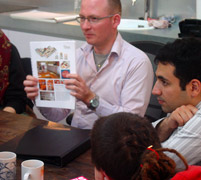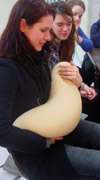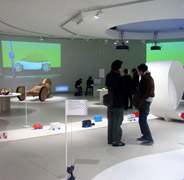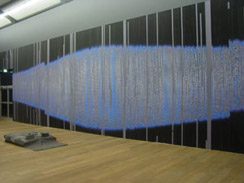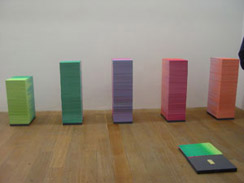Come to the edge, he said
They said: We are afraid
Come to the edge, he said
They came
He pushed them…and they flew.
by Guillaume Apollinaire
Design; while going in a more and more functional direction, slowly losing its identity or personality, we can see globalisation in comparison with every object, especially from minimalistic or functionalist movements, there are no more locations, no more things which are related to places . In this case designers; who’ve been born with brick in his stomach. In other words one who lives all their life in the same place and were inspired by local traditions are starting to feeling more tension nowadays.
In the conception of slow design in the way how research has become a scientific experiment or philosophical theory the line between art and design become finer. On the exhibition which was dedicated to the theme New Energy / sustainability /Slow design one object was more related to the art then to the design , but the way of construction it is in the experience of the thing by itself that reflective ideal of positing thought has it’s basis. This statement is an almost perfect description of Panamarenkos notion of indention as creative method because for him inventive thinking must be invested in something, it must be realised in some way.
Thus when Panamarenko speaks of his machines as working, he is not simply talking about function -although this is enormous importance to him – but about the way in which a whole trajectory of new thought, aimed at an empty location of a certain kind? The journey into the unknown, the adventure, becomes embedded in or embodied by a thing. Even if this trajectory is never completed and flying machine, despite repeated attempts at improving the technology, fails to get off the ground, the concept together with the material engagement with the thing itself, will lend it an undeniable sense of purpose. It will make it intelligible, both as an object of technology and as an object of knowledge. Most important of all, it achieves an independent existence as what might best be described as a ‘radically styled’ work of art. It becomes inappropriate to categorize Panamarenko s works according to their appearance within some overarching notion of his development as an artist; we must look at them instead as a types and categories of things, aeroplanes or birds, insects or cars.
The impetus underlying Panamarenko s approach to work is a somewhat sceptical one, and his scepticism is directed at the institutions of both science and art. In this respect, it is part of an important and still current strand of scepticism in the complex weave which forms the history of ideas in the post-war period .
The most basic assumptions of science- it is institutionalised forms and routine methodologies- were being questioned by a generation intent upon pursuing their dreams rather than acquiescing in the face of a technology driven, steadily-intensifying cold war. In the field of art , this same spirit was manifested as a robot and to branch an attack upon the modernist conception of relationship based upon the idea that some profound sense art should demonstrate belief in a world, even a universe , that was potentially analysable, describable and measurable in its entirety.
His sceptical outlook extended to the nature of human existence .Rapid advances In the social sciences were leading individuals to question the biologically singular and rationalist construction of the human subject. For a brief historical moment it looked as though there were no certainties any more and seemed that everything was up for grabs .
As an example is an excerpt from an interview with an artist which reflects the position of Panamarenko about art and design:
If somebody asks me about my profession, I’m ashamed to have to reply: “I’m an artist.” For I consider most artists to be retarded. They always work in relation to the galleries and museums. This goes for all art, of course, art can only exist in relation to museums and galleries, but why should it depend completely on it? 50% should have a reason of its own as well. It should also have been made if the art world with all is crap wouldn’t exist. Most of the time one sees art which is 100% dependent. I absolutely dismiss all of it. My position is very neutral with regards to the general ideas about art. It’s easy. It relieves me of the question how to be anarchistic. It comes without saying, because otherwise I couldn’t make any good work. Without this dismissal my work wouldn’t be free and it wouldn’t contain any attempt of adventure. What a burden, all those stupid galleries and museums! One should analyse these people who have organized art shows for half of all the artists. One really wonders what artists are looking for in the neighbourhood of such jerks.


